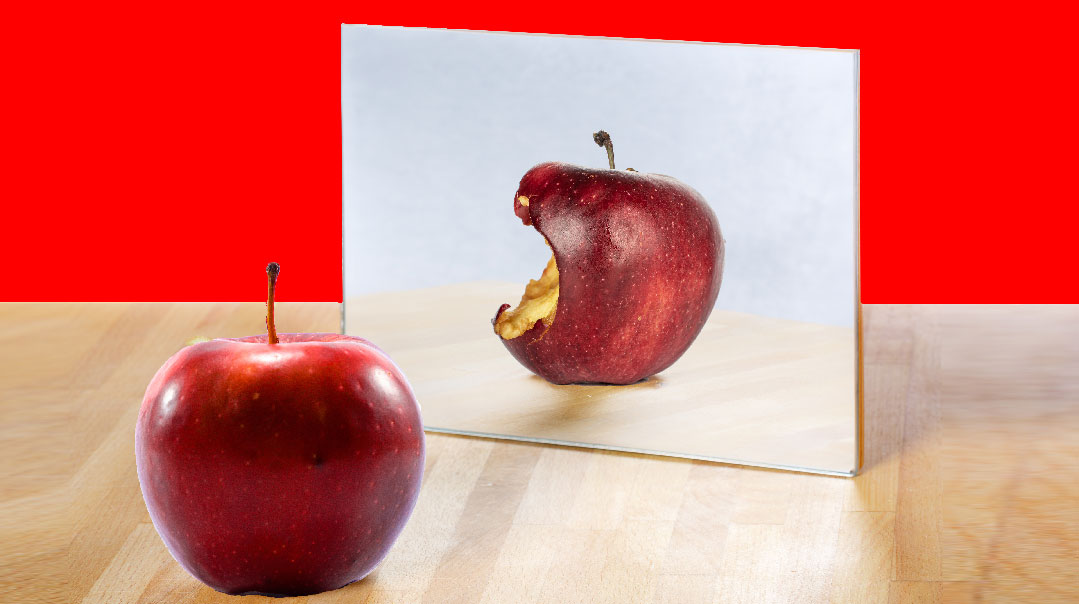True Blue

Revisiting the great techeiles debate

Looking for the chilazon off the coast of Greece. Film director Chananya Kramer (center) with Rabbi Yitzchok Elchonon Zak (left) and Rabbi Yechezkel Toporowitz of Techeiles L’chosvei Shemo, which produces techeiles for Eretz Yisrael (Photos KolRom Media)
H
e was in the fourth grade at the Hebrew Academy of Cleveland when his teacher presented a lesson on the deep blue dye that was worn on the corner of tzitzis and that decorated the Mishkan and the clothes of the Kohanim.
Year later, when he heard that his uncle Rav Yisroel Belsky ztz”l, rosh yeshivah of Torah Vodaath, had started to wear techeiles on his Shabbos tallis katan, it sparked his interest further.
And then, when Rabbi Barkin was learning in a dayanus kollel in Lakewood, his chavrusa, Rabbi Yisrael Rosenberg, also expressed an interest in learning about techeiles. Together, the pair dedicated themselves to learning the subject in depth — from the maamarei Chazal through the Rishonim, Acharonim, and down to the contemporary poskim. The more Rabbi Barkin and Rabbi Rosenberg learned, the more convinced they became that Murex trunculus, a snail found throughout the Mediterranean, was the chilazon that Chazal described as the source of techeiles.
At one point, Rabbi Barkin asked Rav Belsky if he should start wearing techeiles, and if so, how many strings of blue he should include in his tzitzis. Rav Belsky instructed his nephew precisely, noting that the only reason he didn’t wear techeiles on his tallis gadol was to avoid making a public statement.
“However,” he said, “since you are not a public figure, you should wear them.”
“At first I wore them tucked in,” Barkin recalls, “but eventually I felt more comfortable and started wearing them out.”
Rabbi Rosenberg did the same. Although the two were initially met with skepticism from their peers in kollel, inquisitiveness soon followed.
“We realized that most people simply did not have a basic understanding of the halachic sugya,” Rosenberg says. “We felt an obligation to share our findings with the greater public.”
The pair began to write articles and seforim on the topic with acknowledgments from leading rabbanim. They produced a slideshow, and started making presentations at various yeshivos and shuls in Lakewood, Brooklyn, and Monsey that laid out both sides of the debate.
“At first I was afraid they would stone me,” Rabbi Rosenberg says, “but in fact I found people to be very receptive.”
Rabbi Rosenberg says that many people who go through the sources emerge convinced. “There may be some good questions — but in my opinion, the proofs are much stronger. Every year it picks up more and more force. Hundreds of people in Brooklyn and Lakewood are now wearing it publicly, and for every one person wearing it out, there’s another ten wearing it b’tzinah, privately.”
However, despite what they believe to be strong evidence for the Murex, the vast majority of rabbanim have rejected the claims. In North America, the most outspoken opponents of Murex as the source of techeiles are Rav Shlomo Miller, av beis din of Va’ad Harabonim of Lakewood and rosh kollel of Kollel Avreichim Institute in Toronto; Rav Yisroel Reisman, rosh yeshivah of Torah Vodaath and rav of the Agudath Israel of Madison in Brooklyn; and Rav Daniel Osher Kleinman of K’hal Nachlas Dovid. In Eretz Yisrael, Rav Moshe Sternbuch of the Eidah Hachareidis and Rav Asher Weiss have issued written halachic responsa against the Murex.
One might think that the matter ends there. However, in recent years, Jews from all the major frum communities around the world have begun to wear techeiles — both publicly and privately. Some of the most notable supporters of the Murex techeiles include: Rav Yisroel Belsky ztz”l, rosh yeshivah of Torah Vodaath; Rav Zundel Kroizer ztz”l of Tchebin; and ybdlcht”a Rav Meir Mazuz, rosh yeshivah of Kisei Rachamim; Rav Zalman Nechemia Goldberg, av beis din of the Rabbinical High Court in Jerusalem; Rav Hershel Schachter, rosh yeshivah of Rabbi Isaac Elchanan Theological Seminary; Rav Avraham Dov Auerbach, av beis din in Teveria; Rav Moshe Mordechai Farbstein, rosh yeshivah of Chevron; Rav Moshe Mordechai Karp, renowned posek of Kiryat Sefer; the mekubal Rav Gamliel Rabinowitz, rosh yeshivah of Shaarei Shamayim; and Rav Gershon Meltzer, posek at Yeshivas Mir, Yerushalayim. Indeed, the noted dayan Rav Avrohom Rubin notes in his kosher certification for the Murex techeiles that “many gedolei Yisrael have agreed to this [identification].”
Wrapped in Tradition
He was in the fourth grade at the Hebrew Academy of Cleveland when his teacher presented a lesson on the deep blue dye that was worn on the corner of tzitzis and that decorated the Mishkan and the clothes of the Kohanim.
Year later, when he heard that his uncle Rav Yisroel Belsky ztz”l, rosh yeshivah of Torah Vodaath, had started to wear techeiles on his Shabbos tallis katan, it sparked his interest further.
And then, when Rabbi Barkin was learning in a dayanus kollel in Lakewood, his chavrusa, Rabbi Yisrael Rosenberg, also expressed an interest in learning about techeiles. Together, the pair dedicated themselves to learning the subject in depth — from the maamarei Chazal through the Rishonim, Acharonim, and down to the contemporary poskim. The more Rabbi Barkin and Rabbi Rosenberg learned, the more convinced they became that Murex trunculus, a snail found throughout the Mediterranean, was the chilazon that Chazal described as the source of techeiles.
At one point, Rabbi Barkin asked Rav Belsky if he should start wearing techeiles, and if so, how many strings of blue he should include in his tzitzis. Rav Belsky instructed his nephew precisely, noting that the only reason he didn’t wear techeiles on his tallis gadol was to avoid making a public statement.
“However,” he said, “since you are not a public figure, you should wear them.”
“At first I wore them tucked in,” Barkin recalls, “but eventually I felt more comfortable and started wearing them out.”
Rabbi Rosenberg did the same. Although the two were initially met with skepticism from their peers in kollel, inquisitiveness soon followed.
“We realized that most people simply did not have a basic understanding of the halachic sugya,” Rosenberg says. “We felt an obligation to share our findings with the greater public.”
The pair began to write articles and seforim on the topic with acknowledgments from leading rabbanim. They produced a slideshow, and started making presentations at various yeshivos and shuls in Lakewood, Brooklyn, and Monsey that laid out both sides of the debate.
“At first I was afraid they would stone me,” Rabbi Rosenberg says, “but in fact I found people to be very receptive.”
Rabbi Rosenberg says that many people who go through the sources emerge convinced. “There may be some good questions — but in my opinion, the proofs are much stronger. Every year it picks up more and more force. Hundreds of people in Brooklyn and Lakewood are now wearing it publicly, and for every one person wearing it out, there’s another ten wearing it b’tzinah, privately.”
However, despite what they believe to be strong evidence for the Murex, the vast majority of rabbanim have rejected the claims. In North America, the most outspoken opponents of Murex as the source of techeiles are Rav Shlomo Miller, av beis din of Va’ad Harabonim of Lakewood and rosh kollel of Kollel Avreichim Institute in Toronto; Rav Yisroel Reisman, rosh yeshivah of Torah Vodaath and rav of the Agudath Israel of Madison in Brooklyn; and Rav Daniel Osher Kleinman of K’hal Nachlas Dovid. In Eretz Yisrael, Rav Moshe Sternbuch of the Eidah Hachareidis and Rav Asher Weiss have issued written halachic responsa against the Murex.
One might think that the matter ends there. However, in recent years, Jews from all the major frum communities around the world have begun to wear techeiles — both publicly and privately. Some of the most notable supporters of the Murex techeiles include: Rav Yisroel Belsky ztz”l, rosh yeshivah of Torah Vodaath; Rav Zundel Kroizer ztz”l of Tchebin; and ybdlcht”a Rav Meir Mazuz, rosh yeshivah of Kisei Rachamim; Rav Zalman Nechemia Goldberg, av beis din of the Rabbinical High Court in Jerusalem; Rav Hershel Schachter, rosh yeshivah of Rabbi Isaac Elchanan Theological Seminary; Rav Avraham Dov Auerbach, av beis din in Teveria; Rav Moshe Mordechai Farbstein, rosh yeshivah of Chevron; Rav Moshe Mordechai Karp, renowned posek of Kiryat Sefer; the mekubal Rav Gamliel Rabinowitz, rosh yeshivah of Shaarei Shamayim; and Rav Gershon Meltzer, posek at Yeshivas Mir, Yerushalayim. Indeed, the noted dayan Rav Avrohom Rubin notes in his kosher certification for the Murex techeiles that “many gedolei Yisrael have agreed to this [identification].”
Rav Benzion Halberstam of Khal Chassidim Westgate in Lakewood, a scion of the Bobov dynasty, was one of those who decided to investigate the matter further.
“I had heard of it, but like everyone else, my knee-jerk reaction was, ‘Come on. You’ve got to be kidding,’ ” he recalls.
Then, at the sheva brachos of his daughter, Rav Halberstam was surprised to notice that his mechutan, a chassidic Torah scholar from a distinguished lineage, was wearing techeiles. He had examined the family extensively during the shidduch process, but he had never thought to ask about what kind of tzitzis the family wears. He later found out that his son-in-law was hesitant to wear techeiles after the chuppah lest his father-in-law disapprove. But, on the contrary, Rav Halberstam was intrigued. During Shacharis the next morning, he looked at the techeiles of his mechutan during the pasuk of Shema — “ure’isem oso, and you will see it,” and remember all the mitzvos of Hashem — and became very emotional.
“The few times in my life that I merited to say Krias Shema with real intention, it pained me to the point of tears when I recited the paragraph of tzitzis that we don’t have techeiles anymore. And there was my mechutan wearing them before my very eyes.”
He soon discovered Rabbi Rosenberg and Rabbi Barkin, who presented him with the sources pointing to Murex as the source of techeiles. If he concluded that wearing techeiles was proper, he told them, he would give a public speech on the topic in his shul. Watching him investigate the matter, members of his shul started to fear he might soon be wearing techeiles on his tzitzis. They were right.
“After several months of intensive research, I concluded without a shadow of a doubt this is techeiles and one is obligated to wear it,” Rav Halberstam explains. “Although my shul members weren’t thrilled, no one left because of it. Chassidim have a harder time changing because they are very entrenched in the mesorah, but in my opinion there are no real questions.”
True to his word, he organized a Yiddish shiur in his beis medrash, sharing his conclusions to an overflowing crowd of hundreds of people.
The core group of Rabbis Barkin, Rosenberg, and Halberstam was later joined by Mr. Chaim Tropper, a partner in an investing firm, who had been learning the sugya with his chavrusa for seven years.
“The ‘pro’ articles are always meant to be convincing — that’s the point of them,” he says. “But what really convinced me was when I read a few teshuvos against techeiles. I expected to find an equally compelling argument on the anti-side, but was surprised that the questions didn’t seem as convincing as the proofs. I began to look into it further and came to the conclusion that it had to be techeiles.”
Together, the group formalized itself as Chevras Ohel Avrohom, and developed a new website, Techeiles.org, that aims to present all of the evidence for and against the Murex. Toward that end, the chaburah came up with the idea of making a film to present the arguments to the greater public.
“We see people going nuts over chumras that are inconsequential, when we have a mitzvah d’Oraisa that most people are virtually ignoring,” Tropper said. “People at least should know what the main issues are on the two sides of the debate.”
The group approached Chananya Kramer of Kolrom Multimedia to direct it. “I was fascinated by the project but terrified,” Kramer recalled. “I had never learned the subject before, so on one hand I was curious to hear the pro-techeiles side, but on the other hand, I didn’t want to put my reputation on the line. Furthermore, I wasn’t interested in being convinced and having to put on techeiles.”
Indeed, the vast majority of rabbanim, poskim, and gedolim do not wear techeiles today.
After discussing the matter with his rabbanim, he decided to take on the job — but only if the group agreed to include the opposition. “To their credit they had already intended to do so and immediately agreed. We approached it as a Torah sugya.”
The resulting film, Techeiles: It’s Not All Black and White, was released after Succos and is available at major Judaica retailers and online. The film takes viewers on a journey through 2,000 years of history to explore what we know about the ancient art of dyeing and the source of the creature that produced the blue dye of techeiles.
Is This Techeiles?
Techeiles: It’s Not All Black and White presents evidence in support of the Murex from Chazal, Rishonim, and Acharonim while utilizing archaeology, historical documentation, and Greek and Roman literature to support its claims. Although the film sets out with an agenda to present the pro-techeiles evidence, it is full of interviews with leading rabbanim who dispute the claims, such as Rav Shmuel Kamenetsky, rosh yeshivah of the Talmudical Yeshiva of Philadelphia; Rav Aharon Feldman, rosh yeshivah of Ner Israel; and Rav Moshe Heinemann of the Agudath Israel of Baltimore.
Mr. Kramer’s experience producing numerous videos for major Jewish organizations enabled him to reach out to many rabbanim who otherwise would have refused an interview.
“They trusted me that I was legitimately trying to get to the bottom of the issue for the benefit of Klal Yisrael,” Kramer said. “It was so nice to investigate a controversial topic with people who are all l’sheim Shamayim. Our goal was to totally depoliticize it.”
Some rabbanim still declined to be interviewed for the film simply because they lacked the knowledge to comment on the matter or because they didn’t want to mix into the controversy. While some viewers may walk away from the film convinced that the Murex is indeed the source for techeiles, others will certainly be swayed by the words of the many anti-Murex rabbanim who comment.
In addition to presenting both views, the film also attempts to dispel the stigma attached to those who wear techeiles. Rav Chaim Kanievsky, Rav Shmuel Kamenetsky and Rav Dovid Cohen, rav of Gvul Ya’avetz, all permit people to wear techeiles — though they don’t wear techeiles themselves.
“If they want to wear it, they’re allowed to wear it,” Rav Shmuel says.
He nonetheless adds that there are so many questions revolving around the issue that he does not understand why a person would choose to adopt the practice. Rav Kamenetsky, in fact, writes elsewhere, that “we are not concerned about these innovations, even as mere possibility.” On the other hand, Rav Yisroel Belsky was certain of the Murex. “It’s a vadai — it’s certain,” he says in the film.
Science of Change
Some have tried to frame the techeiles debate as a battle between halachah and science. Rabbi Barkin rejects that idea.
“We wholeheartedly reject the accusation that we don’t care about the Rishonim or the halachic process,” Rabbi Barkin says. “We don’t take the Gemara or Rishonim lightly. This is not a science versus halachah debate — there are halachic positions on both sides of the argument.”
Although many issues have been raised from the Gemara and Rishonim to disqualify the Murex, in Rabbi Barkin’s opinion, the questions are largely missing the point. “I believe the questions are based on learning incorrect peshatim in the Gemara and Rishonim, as well as a misunderstanding of the facts about the Murex,” he says. “We have many pieces of evidence from across multiple disciplines. It’s not like a chain that’s as strong as its weakest link. It’s like a rope that’s made up of many strands of evidence. If you ask a question on one proof the whole thing doesn’t fall apart.”
Rav Yitzchok Silber, rosh kollel of Ohr Chaim in Monsey, a Murex proponent, stresses that the issue here is whether we can rely on corroborative secular evidence for a question about metzius, reality. The chilazon is a historical fact. It is only when the Gemara and Rishonim are looked at without taking into account the scientific and historical evidence that one may doubt whether the Murex is in fact the chilazon. But in light of such evidence, halachah does not disprove the Murex identification. In fact, for some issues it corroborates it. For example, one challenge to the Murex is that as a slow-moving snail it is not subject to the melachah of tzad (trapping). But Aristotle and Pliny both report that Murex were historically captured from their underwater dwelling with baited baskets. This is clearly a form of trapping. The historical record thus answers the question, and in fact corroborates the Murex as the chilazon.
Others view this as a struggle between those who are resistant to change and those who are less resistant. Rav Mendel Shafran, renowned posek in Bnei Brak and close student of Rav Elyashiv ztz”l, expressed the push-pull of the issue well. “The fact that [the Murex] is not accepted in the Torah community… is not because there is a doubt regarding the truth of techeiles. On the contrary, the proofs that this is techeiles speak on their own. The reason most gedolei Yisrael don’t use it is… because in the past 200 years [since the advent of the Enlightenment], it has been an established inner feeling that we don’t change things.”
Rav Reisman, a Murex opponent, see things differently. “It is dishonest to pretend the objections are based solely on resistance to change,” he explains. “There may be individuals who feel that way, but that is not the primary issue here. To present this as a debate on change is absolutely dishonest. This really is a machlokes l’Sheim Shamayim. Both sides have legitimate scholarly arguments.”
Rav Reisman insists that in addition to a lack of support from the Rishonim, there are several serious questions from the Gemara. There is also a three-way machlokes Rishonim regarding how many strings of techeiles are needed that is not resolved in the Shulchan Aruch. “What are the odds [the Murex] is correct?” he asks. “There’s no aveirah to wear it, but if you go just with Rishonim and Gemara, you find no real proofs. We don’t change behaviors in Klal Yisrael on a two percent chance.”
Rabbi Reisman argues forcefully that the evidence is simply not existent from a halachic standpoint. “The rejection [by the gedolim] is absolutely based on study into the subject,” he says. “To me it’s a wonder how anyone would think it is techeiles. Basically, we have certainty that the Murex does not fit the description of most Rishonim and uncertainty if it fits any at all.”
Rav Heinemann takes the same position in the film: “We can’t just go after the fads whenever someone comes along and decides this is what it’s supposed to be when there’s no convincing proof that this is [techeiles]. We don’t have a mesorah on it, so we therefore should not get involved unless we know for sure that this is what it is.”
Rav Halberstam acknowledges that resistance to change is a real issue for many people. “People have a hard time changing,” he said. “It’s natural to feel that way, and it’s correct. Our Yiddishkeit is based on the mesorah. But it prevents us from being able to properly judge this sh’eilah. You have to do your very best to put all your biases aside… Change is not something I want to do, but for the sake of emes we have to put that aside.”
Fringe Benefits
Techeiles: It’s Not All Black and White is not meant to persuade individual Jews to change their minhag, Kramer explains. “It’s to get people to learn the subject. I think it’s a great entr?e into the discussion. People should continue learning on their own. Debate is healthy. It’s how we learn.”
Likewise, Mr. Tropper says, part of the film’s mission is to explain why so many people have taken on the practice, despite the reluctance of the greater frum world.
“It looks as if people have decided to go against daas Torah, but that’s simply not the case,” he says. “It’s a very serious subject and there are real bnei Torah on both sides. Even if people don’t decide to put on techeiles, they will have more respect for the subject. Even if we just succeed in restoring the kavod haTorah to an important subject, it is worthwhile.”
Of course, Mr. Tropper says each person should consult with his rabbi before making any change. “Even if you feel strongly about the issue, you need to act al pi daas Torah,” he said. “But either way, it’s not something that can just be ignored. The only way to ignore the debate it is to not wear tzitzis altogether. Everyone has to take a stance one way or the other.”
When asked if he has started wearing techeiles after making the film, Mr. Kramer smiles. “The evidence speaks for itself, but I’m not going to adopt the practice, because that’s not the way I live my life. I do what my rebbeim do. They are bigger than me. Let them make the call. Things change slowly in Klal Yisrael. We are watching the evolution slowly unfold.”
The Hidden Snail
For those who are unlearned in the subject, let’s start with the basics.
As we all know, the Torah commands us to place tzitzis (with a string of techeiles) on the corners of our four-cornered garments. Chazal tell us that the dye for techeiles must come from a sea creature they called the chilazon. Although the Gemara does not specify the exact identity of the chilazon, it is clear that it was a marine creature with a shell, found along the northern coast of Israel and elsewhere in the Mediterranean, and its dye was very similar to the color indigo.
Toward the end of the Amoraic period, Chazal tell us that the chilazon was nignaz, hidden away. Although it continued to be used for several centuries, as is evident from various Talmudic sources, the dyeing process was eventually lost completely to the Jewish People and techeiles disappeared. Nonetheless, the Maharil and others write that the chilazon can return at any time and can be used without a mesorah. (Others, however may disagree.)
Throughout Shas and Midrashim, Chazal extol the many virtues of the mitzvah of tzitzis and more specifically, techeiles.
“Rabi Meir said: Whoever observes the mitzvah of tzitzis is considered as if he greeted the Divine Presence, for techeiles resembles the sea, and the sea resembles the sky, and the sky resembles the Throne of Glory” (Sifrei, Shelach, 15:39).
“And the Rabbis said: Why does the Torah require us to wear techeiles? Because techeiles resembles sapphire, and the Tablets were of sapphire, to tell you that as long as the people of Yisrael gaze upon this techeiles they are reminded of that which is inscribed upon the Tablets and they will fulfill it, as it is written, ‘And you shall see it and remember’ ” (Mishnas Rabi Eliezer, 14).
Although the Rishonim discuss the characteristics of the chilazon and the Acharonim propose various theories as to its identity, it was not a popular topic until the late 19th century, when the Radzyner Rebbe, Rav Gershon Chanoch Leiner ztz”l, set out to rediscover the mysterious chilazon. After much research in the newly built aquarium in Naples, Italy, he concluded that the cuttlefish — a type of squid — was the creature that Chazal had described. Although his finding was not accepted by the vast majority of rabbanim at the time, he did succeed in bringing the subject of techeiles back into everyday conversation.
In 1913, the chief rabbi of Ireland, Rabbi Yitzchak Isaac HaLevi Herzog (who later became the first chief rabbi of the State of Israel), wrote a doctoral dissertation on the subject of Hebrew porphyrology (a word he coined to mean “the study of techeiles”). Rabbi Herzog was knowledgeable in 12 languages and his dissertation made use of Talmudic and Midrashic texts, archaeology, Greek and Roman literature, chemistry, and linguistics, and included references to various Semitic languages, Sanskrit, and Chinese. He came to the conclusion that the chilazon must have been some sort of sea snail. He initially proposed the Murex trunculus, a snail known to have been used for dyeing in the ancient world. However he rejected that theory because the color of the dye produced by the Murex was closer to purple than the sky blue required for techeiles.
In 1980, Professor Otto Elsner of the Shenkar College of Fibers in Israel accidentally resolved Rabbi Herzog’s dilemma. He noticed that on sunny days, Murex dye tended more toward blue, but on cloudy days it appeared closer to purple. Upon further experimentation, together with Ehud Spanier of Haifa University, it was discovered that when the dye is in a reduced state (a prerequisite for dyeing wool), exposure to ultraviolet light will transform the blue-purple (dibromoindigo) to unadulterated blue (indigo). In 1988, Rabbi Eliyahu Tavger utilized this research to successfully make a pair of techeiles with the Murex dye using the Gemara’s dyeing methods. In 1993, he and others established the Ptil Tekhelet factory, which has subsequently sold over 200,000 pairs of tzitzis.
It is well known that the Mediterranean coast was the center of the dyeing industry in the ancient world. Over the past century, archaeologists have uncovered thousands of Murex shells along the cost of Israel and Lebanon that were clearly used for dyeing. Because of its great value, purple and blue dyeing slowly came under imperial control, and Roman rulers issued edicts stating that only royalty could wear garments colored with these dyes — on threat of death — and only imperial dye houses could manufacture it.
Based on a gemara in Sanhedrin (13a), some Acharonim propose that the Roman decrees made it exceedingly difficult for Jews to continue to manufacture techeiles. Because the mitzvah of tzitzis can still be performed without techeiles, Jews did not risk their lives to continue to produce it. Finally, the Radvaz explains, when new ways were discovered to dye with indigo, the Murex industry disappeared completely and with it the secret of techeiles.
Since the late 19th century, several theories on the chilazon’s identity have been presented — but none have been conclusive. Over the past four decades, however, new scientific and archaeological discoveries, along with renewed study of the primary Talmudic sources and commentaries, have led many to conclude that the chilazon has been found. A significant number of rabbanim, poskim, and roshei yeshivah from across the frum spectrum — chassidish, Sephardi, litvish, Modern Orthodox, and daati-leumi — believe that the chilazon is a type of marine snail called the Murex trunculus, known to have been used extensively for dyeing in the ancient world.
(Originally featured in Mishpacha, Issue 738)
Oops! We could not locate your form.












